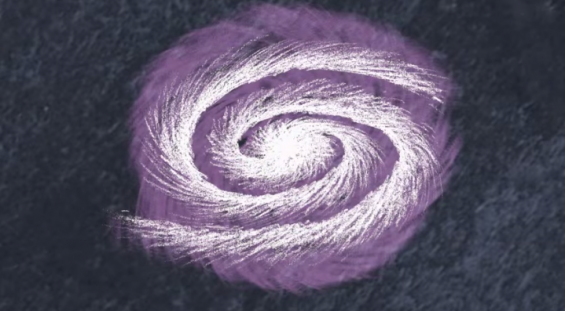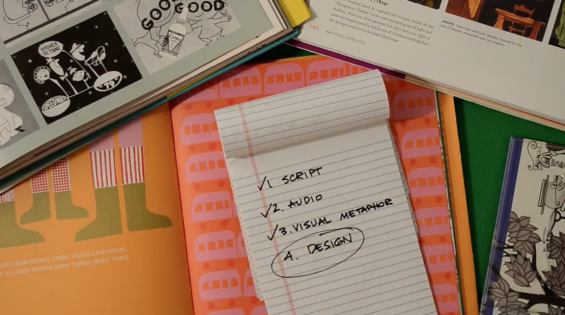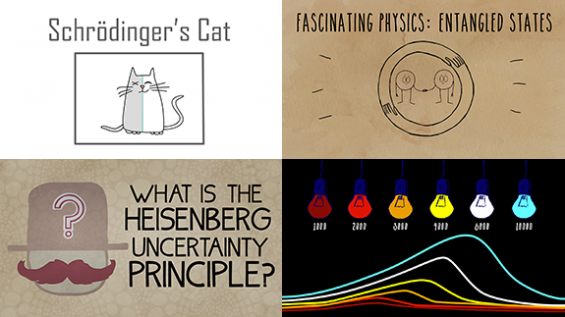
5 questions for physicist James Gillies
James Gillies is an expert science communicator. If you want to learn more about dark matter, or find out if antimatter falls up, or explore how cosmic rays help us understand the universe, you can — he and his fellow physicists at CERN have created TED-Ed lessons to help you do just that.
TED-Ed spoke with Gillies recently about the Large Hadron Collider, what Nobel Prize-winning physicists do for lunch — and how to spark scientific inquiry in schools around the globe. Below, read an edited transcript of our conversation.
Talk to me about what you were like as a kid. Did you have a restless spirit, or were you able to sit still in a classroom?
I was a bit of a restless spirit. I was brought up by my mother, who was also a restless spirit. She traveled around all the time so we moved quite a lot. When I was around 10 I was in my mother’s class for my final term of primary school — she was the head teacher of the school as well — and if you’re the child of a teacher there is an onus on you to play up and show that you’re not just the teacher’s pet. I was really quite naughty at that age. Also as a kid, if anyone gave me a toy the first thing I would do is take it apart. I always wanted to know what was inside. I was indulged in that — I think Mum recognized that this was actually a positive learning experience. When I was a teenager, I had a motorbike. I would strip my motorbike down in the kitchen every weekend and rebuild it. I don’t know why, it never went any faster. That was the plan, it was supposed to go faster. I was indulged in that as well.
I’m more and more convinced that all kids experiment. They just do. And then at some point some people continue doing that, and other people don’t. It’s not something I would pretend to be a huge expert in, but from where I sit here at CERN I’ve watched this happen. One of the projects we’ve done in the community is a primary school project with 10-year-olds around scientific inquiry. [Click here to download the English-language pdf of how to run this awesome class science project anywhere in the world you happen to be.] It happens over several weeks. First the kids are presented with a box. The box has got stuff in it. And the first time they see the box, they can’t touch it. They can do experiments with it – they can look at it. They can hear it – we can shake it around for them. They can smell it. They might weigh it. And then we talk about how scientists would approach doing different things to it, and they write down what they think is inside the box. It’s incredible to see how all of these kids think about it. They really do think scientifically about it. As they get older they develop different interests and some of them lose that level of curiosity, but ALL kids seem to have that spirit of inquiry.
If you were to walk a teenager around CERN today, what would you point out?
Well, if you walk around on the surface of CERN what you would see is a lot of very sad-looking buildings dating back to the mid 1950s, because all the cool stuff at CERN is underground. The Large Hadron Collider is in a tunnel 100 meters underground, and it’s just an amazing place to go. So if I could, I would run it and take them underground to show them these amazing pieces of machinery. But if I couldn’t do that, the place I would want to take them is probably the cafeteria at lunch time, to see this mass of people in there from all over the world, speaking all kinds of different languages — but mostly jumbled up English of various kinds is what’s spoken down there — discussing science very animatedly and passionately. On any given day you’ll find Nobel Prize winners eating lunch and rubbing shoulders with students. It’s just an amazing buzz. Symmetry did a particle physics bucket list and way up there on the particle physics bucket list was ‘go and soak up the atmosphere in the CERN cafeteria.’ So that’s a cool thing to do.
If you were a teenager and you were learning about CERN for the first time, I would want you to know that CERN is chock full of amazing people from all over the world who are all really passionate about what they do, and what they do is try to understand what makes the universe tick. Why it is that the stuff we’re made of organizes itself into the things that it does? That’s what CERN is trying to understand. And in doing that, we have something like 110 nationalities working here. People from all over the world, who have very different cultures and backgrounds, whatever, but they’re all passionate about that one thing. And it all works, it all fits together. I’d also want teens to understand that CERN exists to further human knowledge. We’re not here to make technologies, we’re here to advance human knowledge, and I think that’s an amazingly noble thing that the human race does in places like this. There are very few places in the world like CERN and Fermi and that’s what they’re there for. But that’s not the end of the story. Because what happens when you bring all these highly curious, motivated and smart people here, and they want to go and discover the Higgs boson? Well, to discover the Higgs boson they might need a certain thing, and if they can’t buy the thing, then they may have to go off and invent it. So there’s a lot of innovation, a lot of practical benefit that comes out of particle accelerators like CERN, going all the way back to the very beginning. One of my favorite examples is not the World Wide Web, even though that was invented in our particle physics lab, but PET scanning, because that’s a CERN idea that goes back decades and decades. And the practical use today for the medical diagnosis community is that now you can put a PET scanner inside an MRI scanner and do two kinds of medical imaging in the same device, perform two procedures for the patient.
Do you often notice science like that “in the wild,” so to speak?
Yeah, everywhere. The basic science community doesn’t do as good a job as it ought to of communicating what practical good stuff comes out of what we do, even though we’re trying harder and harder these days.
I see science everywhere, and one big preoccupation I have is that we are more and more dependent on science, yet we are becoming more and more detached as a society from science. That’s a pretty dangerous situation to be in. So I think that high profile science organizations like CERN should argue the case for evidence-based scientific thinking and decision making, because that’s something that we need.
Favorite science fiction film?
Has to be Blade Runner. Actually, Star Wars — I saw it when it came out in 1977 and it was amazing. Still is amazing, even though they’ve done things to it. Also, growing up there was a science program on the BBC called Tomorrow’s World which I used to love — it showed this very positive view of the future. And of course I’m old enough to remember watching the Apollo missions live for the first time. It’s still incredible to think of what was actually achieved there. So those were big influences.
Any particular science fiction book you’d recommend?
I used to read tons of science fiction as a teenager and now I’m reading all sorts of near-future science fiction written in the 60s and 70s and 80s. I read The Handmaid’s Tale for the first time recently and it’s just incredible.



